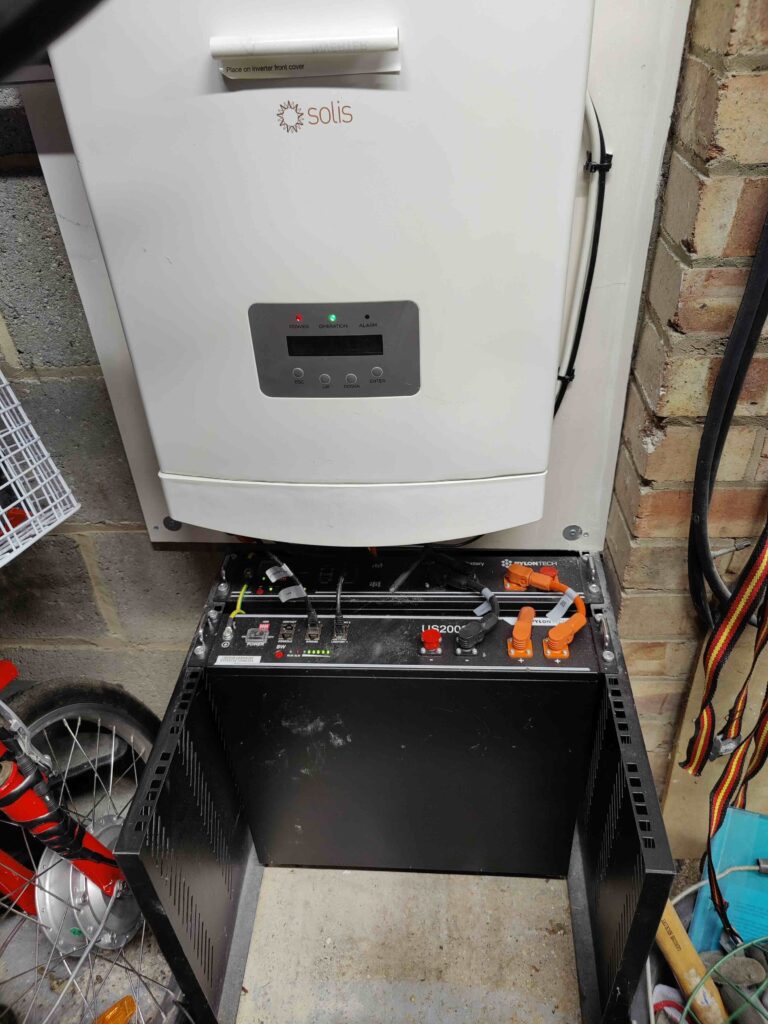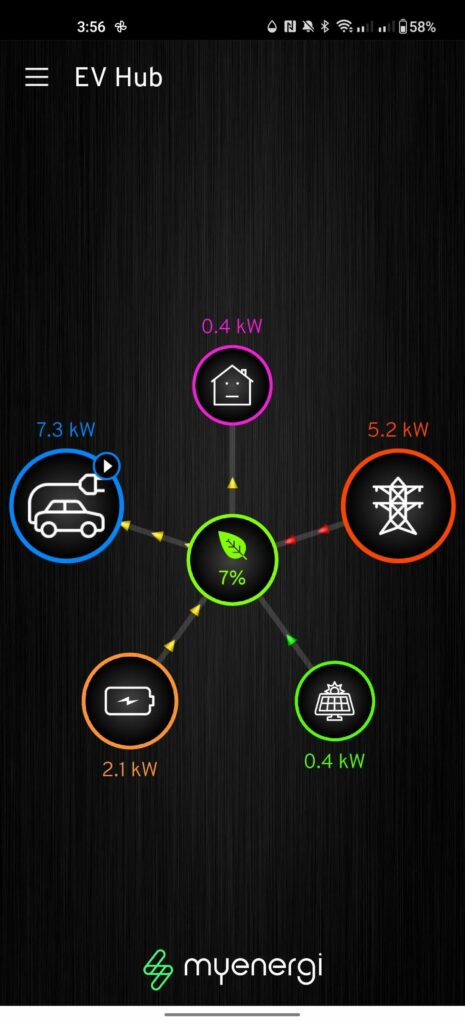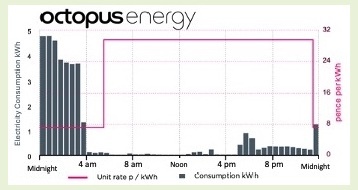*** Updated – see end of article for further details ***
Solar Panels and Immersion Heater Diverter System
In 2014 we had Solar Photovoltaic panels installed on the roof. The system is oriented East – West because of the pitch of the roof and consists of 13 panels (Renesola 255W with Solar Edge inverter and voltage optimisers), 3 panels oriented to the East and 10 to the west giving a combined capacity of 3,32 kW. On average the panels generate 2.74MWh of electricity per year over the past years. The only major down time was the period of extended snow one year which covered the panels.

We receive payment via the old Feed in Tariff system, which is no longer available, but amounts to several hundred pounds each year. Note that higher output panels are available these days.
At the same time we also installed an immersion heater diversion system which redirects excess power, that would ordinarily be exported to the grid, into the immersion heater to heat the hot water tank. In the summer this can be sufficiently effective so that we don’t need to heat the water using oil.
This system was installed by Midsummer Solar from Cambridge but they no longer install solar.

Battery Storage and Car Charger System
In Autumn 2021, we added to this system through the Essex Solar Together initiative by installation of a battery storage system and an Electric Vehicle charging point. The installation was contracted to Greenscape Energy who had the contract from Essex.
The battery system consists of 2 Pylontech batteries providing 4.8kWh of storage that is fed by excess solar generated electricity that would otherwise be exported to the grid by an inverter system. The batteries are 442mm x 410mm x 89mm in size and are stored in a rack system in the garage which is expandable. The way this works is that when the solar panels are generating more electricity than is being used in the house, it is stored in the batteries, and then this power can be used when there is additional power demand either because demand exceeds the solar generation, or in the evening when we would normally have to draw electricity from the grid. For a sunny summer’s day this mean that we effectively use no electricity from the grid as it is either supplied by the solar panels or from the battery in the evening sufficient to last until solar generation starts up again the next day. This is a game changer, because you can use the vast majority of the electricity you are generating from the solar panels rather than exporting it to the grid, and under the feed in tariff you still get paid for potentially exporting it. Obviously in the winter or on cloudy days you still need to use grid electricity, but the system still provides extra power on a sunny winter’s day.
In addition we installed a Zappi 2 electric car charger. This is able to detect both solar power generation and call on power from the battery, so can charge an electric vehicle without using grid power, albeit slowly. If you need to charge more quickly at 7kW, more power must come from the grid.
Overall the system is now set up so that solar power is used for the load in the house first (including the car charger if that is running), then directed to battery storage if there is excess and finally to heating the hot water via the immersion heater if the batteries are full. If there is then still excess power it is exported to the grid.


Adding more Batteries and Using Load Shifting
Overall electricity demand in the UK changes by time of day and week. Demand and cost are highest in daytime and when domestic use peaks between 5 and 7 pm. When demand is low, e.g. overnight, the cost is lower, sometimes much lower. Power companies offer variable rate tariffs to encourage electricity use at low demand times. An example is Economy 7 where the price is lower for 7 night hours. Sometimes some consumers even get paid to use electricity! On these tariffs, moving electricity usage to the cheap times will reduce your bill, so-called load shifting.
In January 2024, we switched our electricity tariff to Intelligent Octopus GO primarily to reduce the cost of charging our Electric Vehicle at home. This tariff gives 6 hours of cheap electricity at night to charge the car, but normal household electricity usage is also covered. After some research, I realised that, particularly in winter, we could store cheap power in the batteries overnight and use the stored electricity during the day/evening in the home. To help with this I added 2 extra batteries to the installation giving a total of 9.6 kWh capacity. The Pylontech batteries are useful in this regard because they can be added in a modular fashion to build up a larger capacity.
The extra batteries allowed us to store enough electricity for most of the household usage during winter, so we adopted an approach of charging the batteries overnight and then using that electricity during the day and evening. Overall, we save quite a bit in winter so far, around £60-70 in March versus a flat rate tariff. Total cost in March excluding the standing charge is currently under £1 per day including cooking and will get less as we generate more solar power in the summer when we will switch to using only solar (Currently, in May, we have had a run of several days without needing power from the grid, and this will further improve in June and July).

When thinking about this kind of approach, one needs to consider overall savings versus the cost of the system cost. For us the benefit was a nice bonus on top of our primary aim to extend the usage of our solar power. There is energy loss to and from the batteries to account for as well, plus battery degradation over time. Conversely electricity generated at night is greenest, and we help reduce daytime demand on the grid.
